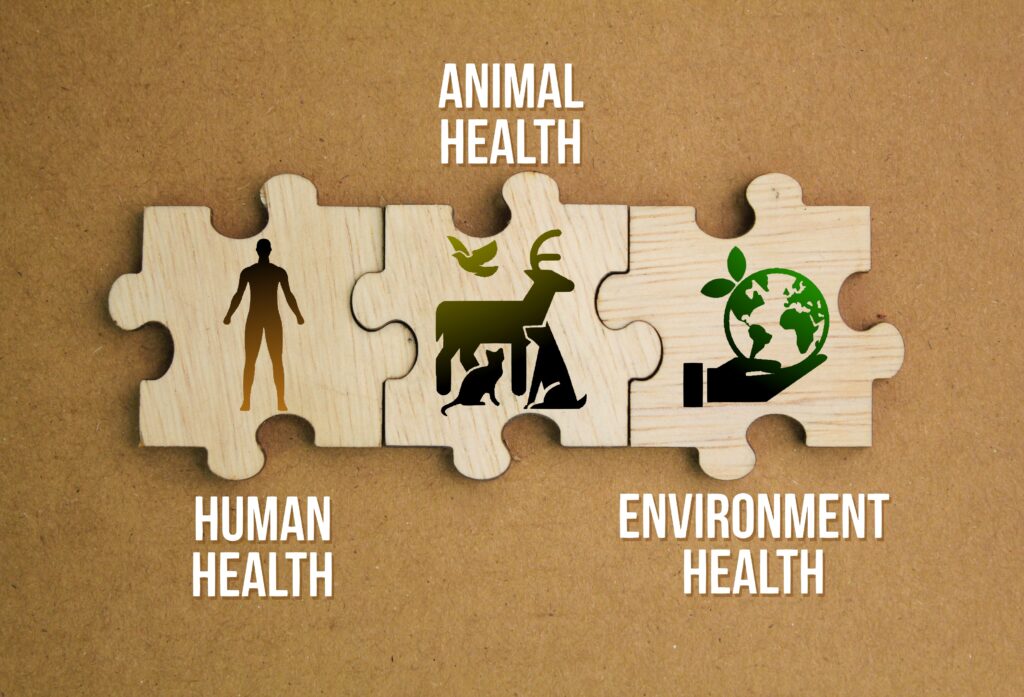Resources
The One Health approach is based on the concept that “the health of humans, domestic and wild animals, plants, and the wider environment (including ecosystems) are closely linked and interdependent” (World Health Organization) and that improving the health of each of theses systems improves the health of the others. The OHMR is based on the broader One Health concept, recognizing that the same factors (e.g., medications, environmental exposures) that affect the microbiome and overall health of humans also impacts pets. Importantly, health benefits from human-pet interaction likely extend to exposure to each other’s microbiomes.

There are several initiatives that bring together academia, industry, and government agencies in order to support the One Health concept.
One Health Microbiome Center, Penn State is a collaboration across academia and other sectors that, like the OHMR, aims to advance microbiome science in the context of the One Health concept. The OHMC works to “harmonize our expertise in agricultural, environmental, and biomedical microbiome sciences with an integrative One Health vision. The Center fosters long-term working relationships while simultaneously providing infrastructure and resources to support transformative, interdisciplinary microbiome scholarship”.
One Health – Center for Disease Control and Prevention. The CDC states “A One Health approach encourages collaborative efforts of many experts (like disease detectives, laboratorians, physicians, and veterinarians) working across human, animal, and environmental health to improve the health of people and animals, including pets, livestock, and wildlife.” Learn more about how healthy animals are important for the health of humans.
Multi-agency One Health initiative. The UN Environmental Programme, World Health Organization, Food and Agriculture Organization of the United Nations, the World Organisation for Animal Health signed “a groundbreaking agreement to strengthen cooperation to sustainably balance and optimize the health of humans, animals, plants and the environment”. Read more here to learn about the WHO’s One Health efforts.
USDA collaborates with several agencies to address global challenges such as antibiotic resistance and the spread of infectious diseases in agricultural animals. Learn more about the USDA’s One Health approach here.
The below are helpful if you’re interested in conducting a microbiome study in companion animals and/or humans.
Best Practices for Microbiome Study Design in Companion Animal Research. This review addresses the considerations involved in designing nutrition intervention studies for companion animals, including pre-screening measures, as well as the opportunities and challenges associated with recruiting pets from colonies or households.
The Harvard Chan Microbiome Collection Core (HCMCC). The HCMCC was established in response to a strong demand among the research community for validated microbiome sample collection kit configurations and easy usability for in-home sampling. The HCMCC supports population-scale microbiome sample collection to expand our understanding of the microbiome and to improve population health.
The Harvard Chan Microbiome Analysis Core (HCMAC). The HCMAC provides end-to-end support for microbial community and human microbiome research, from experimental design through data generation, bioinformatics, statistics, and interpretation. This includes general consulting, power calculations, selection of data generation options, and analysis of data from amplicon (16S / 18S / ITS), shotgun metagenomic sequencing, metatranscriptomics, metabolomics, and other molecular assays. The Microbiome Analysis Core has extensive experience with microbiome profiles in diverse populations, including taxonomic and functional profiles from large cohorts, qualitative and quantitative ecology, multi’omics and meta-analysis, microbial systems biology, and human epidemiological analysis. By integrating microbial community profiles with host clinical and environmental information, we enable researchers to interpret molecular activities of the microbiota and assess its impact on human health.
